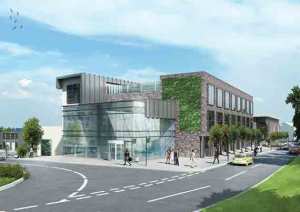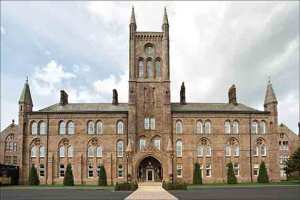Manchester is probably booming. Warrington might be booming soon. Crewe could boom if things go its way.
The list of North West boom towns could be as long as you like, because there is not a town in the region that does not think it is made for success. Yet, how many have a serious claim to be potential boom towns?
And how many are destined for disappointment, doomed to come out of the economic recovery no better off than they are today?
Analysts say the North West has some strong candidates for boom town status, if “boom” means a local economy growing appreciably faster than the regional trend. And they all have some powerful features in common.
According to John Swinney, senior economist at Centre for Cities, three criteria make for a boomy local business environment.
“The most important factor is skills. Investment these days is all about people, not property, and skills in the labour market is the big driver,” he says.
“Second is connectivity – do you have the right transport to jobs, and around the town, and links to the rest of the UK?
“Third is access to knowledge, meaning do you have knowledge-based businesses in the town already, a university, a knowledge community? When you have that – and, for instance, central Manchester has all of those – then businesses want to be there, despite the high cost of property. But skills are the main driver. A town can have all the office blocks and development sites it likes, but if it hasn’t got a labour force with the right skills, then it won’t work.”
Among the long list of other things that do not help towns to boom are investing in culture, retail-led town centre development and new housebuilding, says Swinney. “These are all consequences of a strong economy, not causes of a strong economy,” he says.
Simon Bedford, partner at Deloitte, does not see it quite like that – but there are substantial overlaps in his list of boom-town attributes.
Bedford says: “To grow above the regional trend, a town needs to yoke itself to an economic sector that is growing above trend. Look at Burnley, for instance, which has allied itself to the aerospace supply chain sector, and is now doing quite well.”
So which towns will boom, and which will merely whimper? Which towns are on the way up – and which are on the road to nowhere? EG asked two experts – with their different perspectives – to asses five plausible candidates (all placings are according to EG).
 Warrington
Warrington
Warrington’s location is hard to fault. JLL has tipped it as one of 10 potential growth centres for the UK office market in its report, The New Geography of Office Demand. Oxford Economics says annual growth in office employment is expected to be over 2% – the second-best in the UK, excluding the big cities. Muse Developments is at work on the town centre’s £107m Bridge Street Quarter. Omega – where the latest plans for the 446-acre South site are before planners – is also a powerful asset. The £160m Warrington Waterfront will unlock 200 acres of land for office and residential.
The experts’ view
Swinney says“A good and cost-effective location and it always does well, with a relatively skilled workforce, good connections, and some higher-paid research jobs among a relatively skilled workforce. But the town still needs to think about skills levels, and we see a split between a successful out-of-town and a poorly performing town centre.”
Bedford says “Warrington is well located and has a cost advantage over Manchester, but it hasn’t yet been able to grow its town centre business offer, and there is a slight danger that businesses will be turned off by out-of-town offices.”
Stockport
Stockport, already affluent, is close enough to Manchester city centre to feel some of its red-hot glow. It also has excellent transport links and a vast indigenous business community employing 121,000 people. Muse’s £145m Stockport Exchange development is providing new office space around the railway station – a second phase starts on site this year – and a new link road from the A6 to Manchester airport will improve international connections.
Mike Horner, regional director at Muse, says: “Stockport has strong leadership, it is close to the desirable commuter territory in Cheshire, the residential market is strong, and its geographical position is strong. It’s a satellite of Manchester, yes, but strong enough to deliver more than trend growth. Leadership plus good geography equals change and investment.”
The experts’ view
Swinney says “Stockport’s fortunes are hitched to Manchester, just as the outer London boroughs are hitched to the City and West End. It’s ideal commuter territory, and could see some airport spin-off, but Manchester city centre is the main place for jobs and growing output.”
Bedford says “Stockport has an in-town offer, and an out-of-town offer, and a diverse business base including its own professionals in law, accountancy, and so on. It’s well placed.”
 Crewe
Crewe
Crewe will be booming any day now, says Cheshire East council’s hyper-enthusiastic leader, Michael Jones.
Hopes are high that the town will pip Stoke-on-Trent to become a major junction on the HS2 high-speed rail line, while indigenous businesses such as Rolls-Royce and Bentley are riding the auto-industry boom. The council is attempting to resolve long-term town centre problems – it recently splashed £6m to acquire the former Modus retail site at Royal Arcade/Delamere Place (pictured) in a deal with Redefine International.
Jones says: “We’ve got the connectivity, the infrastructure, and we’re the gateway to the northern powerhouse. We’re already doing well – unemployment is below 1%, down from 5.8% three years ago, and we’ve got the potential to create a growth zone out to Stoke and to Middlewich, where we could see a freight terminal and a new business park around junction 18 of the M6.”
The experts’ view
Swinney says “I doubt HS2 will drive growth because Crewe is already a major rail hub with an excellent station, and that hasn’t had so much impact.”
Bedford says “Crewe gets a big thumbs-up. In addition to the road and rail, it has strong routes to growth through local firms like Rolls-Royce and Bentley.”
 Burnley
Burnley
A wild card, some might think. But think again. Burnley ranked in the UK’s top 10 for growth in private-sector jobs in 2014, and Experian says it has the best growth prospects in Lancashire. A new rail link to Manchester will yoke the town into the Northern Powerhouse. Council leader Mark Townsend says: “We’ve got universities we didn’t have before, we’re sorting transport to bring the markets closer to Burnley, and improving links to Manchester is a no-brainer, which has to boost the local economy. We are growing our skills base and stopping it draining away to the big cities.”
Vision Park (pictured) – located next to the college campus – is a big hope. The 45,000 sq ft first phase is completing next summer, with an innovation centre to follow. It will total 100,000 sq ft. Bob Tattrie, managing partner at Trebor Developments, says: “Burnley is improving partly because Manchester is improving, but it has its own strengths.”
The experts’ view
Swinney says “The outlook is tough for Burnley. There’s a low skills profile – it ranks 52 out of 64 towns we monitor on skills and qualifications, so the challenge is to improve that. Proximity to Manchester is a real plus, but improvement could take a long time.”
Bedford says “Burnley is already doing very well. It is attracting a lot of aerospace jobs – the former Michelin site has been turned into the 84-acre Burnley Aerospace Suppliers Park.”
 Lancaster
Lancaster
The port of Heysham, a new link road between Heysham port and the motorway network that will be completed in 2016, and the nuclear industry could all combine to give Lancaster boom town status. But links to Manchester definitely will not, says Andrew Dobson, Lancaster council’s chief regeneration officer.
Dobson explains: “Our growth will come from off-shore energy in Morecambe Bay, which could deliver 4,000 jobs in the next five years, nuclear power and the defence industries, and National Grid infrastructure. We have around 70 acres of employment land around the port.”
Reviving the town’s stalled housing market is also a priority. Brownfield sites had not been popular – but they are now back in, says Dobson. Chief among them is PJ Livesey Group’s conversion of the Lancaster Moor asylum into 180 homes (pictured). Local agents said there was no market for apartments in this location, but Livesey ignored them and followed its instincts. The project also unlocked the wider 30-acre site.
The experts’ view
Swinney says “Strong rail link, but I worry it will be like Preston, which has strong employment growth but relatively low average wages and low skills.”
Bedford says “I wouldn’t pick it as a boom town. It needs a clear definition of what it is going to be famous for if it is to be competitive. I think Whitehaven might benefit more from nuclear than Lancaster.”
*all placings according to EG











